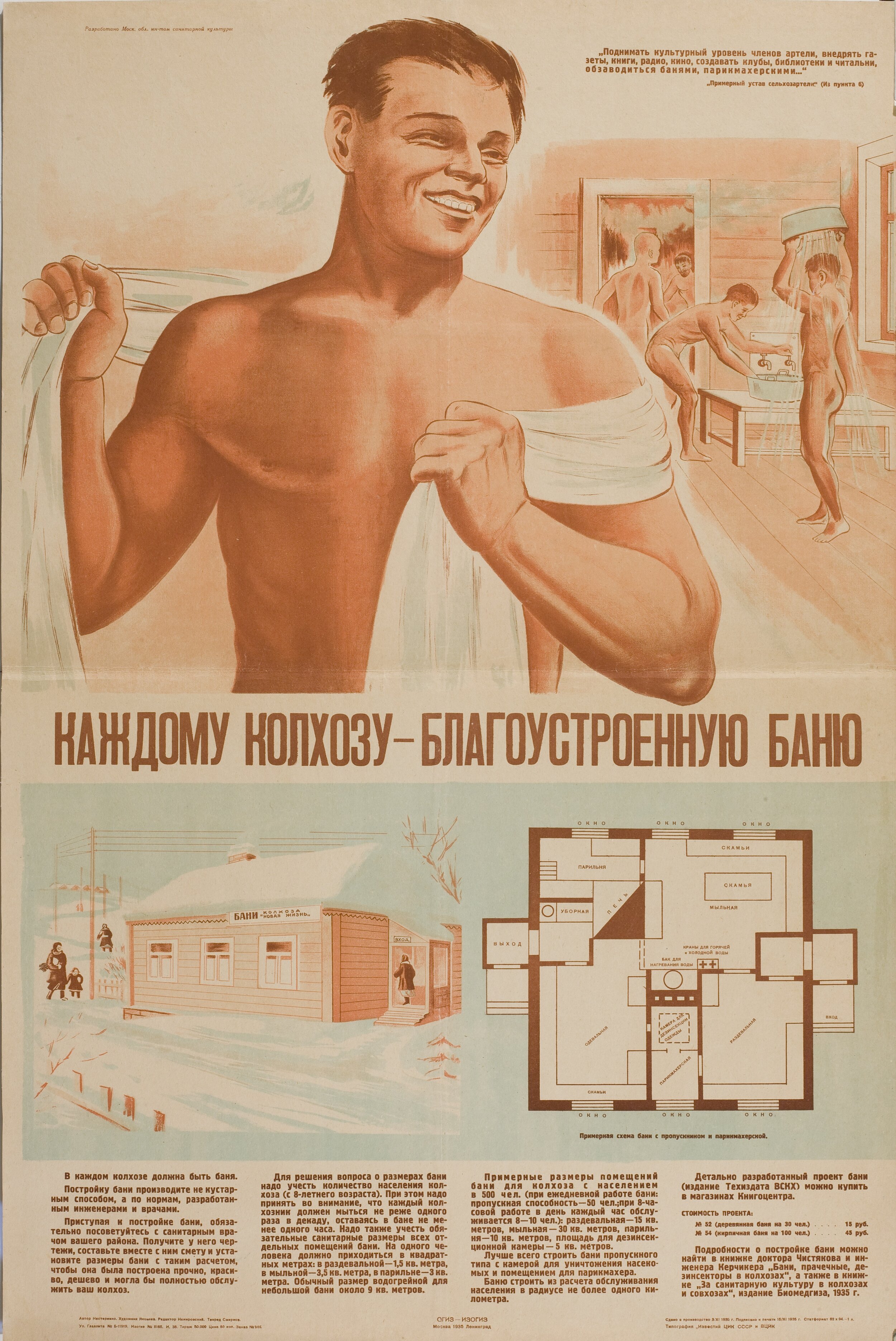The best Soviet posters of the Banya
How the USSR adapted the traditional Russian symbol of the bathhouse
This collection of posters mostly date back to the Soviet era. The origins of the posters stretch from Russia to Mongolia and Ukraine, and were predominantly created to encourage the general public to use the banya. Noticeably, many of the posters focus on practicality and hygiene rather than socialising in the banya — from highlighting the dangers of dirt to illustrating ideal layouts for well functioning banyas, the images depict hard working civilians who visit the banya as part of a healthy lifestyle. It is clear from the nature of these images that the running of banyas had become an interest of the state.
Most of these images come from Ethan Pollock’s book Without The Banya We Would Perish, available from the Pushkin House Shop now.
This Soviet poster encouraging hygiene among industrial workers carries the caption in Ukrainian, “GO TO THE BANYA AFTER WORK”.
This pre-Soviet WW1 poster advertises the mobile banyas used by the Russian army to boost morale and cleanliness among the troops.
“FOR EVERY COLLECTIVE FARM — A WELL-BUILT BANYA”.
This Moldovan poster advertises a model for banyas on collective farms.
This Soviet poster includes a message in Mongolian.
“DIRT IS THE SOURCE OF DISEASE. Wash at the banya and change your bed-linen no less than once a week.
These film posters were created for a 1962 animation directed by Anatoliy Karanovich and Sergei Yutkevic, based on a 1930 play by Vladimir Mayakovsky. The film is experimental and satirises the bureaucracy. Other than a brief mention during the introduction, there is no sign of a banya in the film — most likely a reflection on 1930, as there were not enough banyas to cater to the population at this point; the banya was in demand but lacking, and its absence from the narrative suggests just that.
The final image here, provided by Andrei Fomin at Banya No.1, distributed from around 1986-1988, has a heavier focus on the banya as a traditional practice that supposedly helps you lose weight and cures you of ailments. With less of a concentration on washing, this is an indication that hygiene was no longer such an issue for the state. As water became more accessible in the home, the banya was free to focus again on its rural origins, with ritual and community at its core.
About the author
Madeleine Cuckson is an English Literature and Drama graduate from The University of Manchester. Since finishing her studies, Madeleine has worked in both the post-production film and experiential design industry - private and charity sector. Madeleine has a specific interest in Russia’s arts and cultural history with a current focus on performance and the Ballets Russes.
SEE ALSO
Blog: A Short History of the Banya - and how it arrived in London
In 1113, a monk named Andrew wrote in The Primary Chronicle of his travels around the areas that would become Russia. Andrew observed that banya goers “make of the act not a mere washing but a veritable torment”. It is clear from early on that international interpretations of the banya have often been misinformed. From marital rituals, to the legacies of peasants and Tsarinas alike who have given birth there, the banya is an enduring, uniting pillar of Russian identity…
Blog: "Twinned" Banyas: In conversation with Sanduny and The Bath House
Over its history, which stretches back approximately one thousand years, the Russian banya has served as an emblem of community, spirituality, politics and identity. With physical cleanliness serving as only one element of the experience, the banya dares to explore bathing as something profound, not merely physical. Discussing both international and Russian banya practices today and historically, I spoke with the owners of two ‘twinned’ banyas — The Bath House Russian Banya, newly established in London’s Victoria, and the renowned Sanduny banya in Moscow, established over two hundred years ago…
Podcast: All About the Russian Banya
What is a banya? What do Russians do when they go to the steam-room, and what are those conical hats they’re wearing? Madeleine Cuckson speaks to Banya No. 1 founder Andrei Fomin to answer all the questions you might have had about the traditions and future of the Russian bathhouse.










